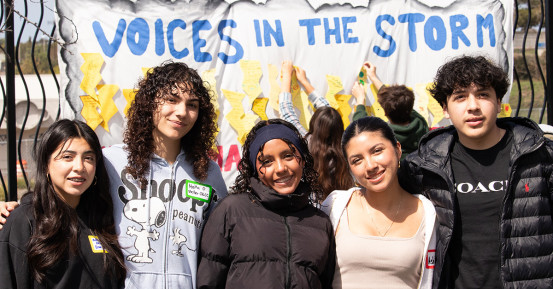When Planning Sustainable Energy Systems—Don’t Forget About People
New research led by UC San Diego reveals that omitting rules and norms in socio-economic systems—known as institutions for short—can change the costs and pathways for effective climate mitigation
Story by:
Published Date
Article Content
New research published in the Proceedings of the National Academy of Sciences (PNAS) shows that models commonly used to shape climate mitigation need to include human behaviors and rules—and shows models can be adapted to do so.
In order to achieve climate change goals, states, governments and major corporations are looking for the best ways to reduce emissions and deploy sustainable sources of energy. As the size and complexity of these systems grow, it is important to use the right models.
Through adding institutional factors, we demonstrate concrete ways sustainability models can be enhanced to address real-world questions, such as consumer adoption of clean energy technologies and national costs of climate mitigation the research team writes.
“Our report examines three common modeling approaches and shows that omitting human-related institutions can alter the cost and outcomes of sustainability models,” adds lead author Michael Davidson, assistant professor at the School of Global Policy and Strategy and the Mechanical and Aerospace Engineering Department of the Jacobs School of Engineering. “Our findings reveal that incorporating only one of many institutions in computational models delivers measurable effects on sustainability outcomes, such as emission reductions of 8-11% and costs nearly 6% higher nationwide.”
Computational sustainability modeling with detailed representations of natural and engineered systems can represent the techno-economic complexity of energy systems, but they rarely get into the political and economic institutions that shape that decision-making and could have a major impact on sustainability outcomes.
The report examines three different modeling approaches—integrated assessment modeling (IAM) for global/national energy usage, engineering–economic optimization (EEO) for regional usage and agent-based modeling (ABM) for local and urban areas.
The first approach, based on IAM, used the Global Change Assessment Model–USA, examining the intersection of five sectors — socioeconomics, energy, land, water and climate — in the U.S. The second approach, based on EEO, looked at the power system expansion and operations for 11 states in the western U.S. that addressed power system capacity expansion and operations. And the third approach, based on ABM, looked at the installation of solar panels in households in the Netherlands and its impact on regional CO2 emissions.
As the study moved from macro (IAM) to meso (EEO) to micro (ABM), these models incorporated different types of institutions. These ranged from differences in policy support and capacity, and market differences in energy sector, to households and institutions shaping green energy adoption.
“Institutions constrain and shape the types of energy technologies that are deployed, and institutions may be changing over the sustainability transition,” Davidson said. “That is why any sustainability model must include the institutions and people who are managing them.”
The team lays out several concrete steps to advance joint efforts between modelers and social scientists to build more realistic sustainability models.
The work was supported by the Alfred P. Sloan Foundation, the European Research Council (ERC) under the European Union’s Horizon 2020 Research and Innovation Program and the Netherlands Organization for Scientific Research.
“Simulating Institutional Heterogeneity in Sustainability Science” was written by Michael Davidson, University of California San Diego; Tatiana Filatova, professor in computational economics at Delft University of Technology; Wei Peng, assistant professor, School of Public and International Affairs and Andlinger Center for Energy and the Environment, Princeton University; Liz Verbeek, Delft University of Technology; and Fikri Kucuksayacigil, University of California San Diego.
Share This:
You May Also Like
Stay in the Know
Keep up with all the latest from UC San Diego. Subscribe to the newsletter today.




